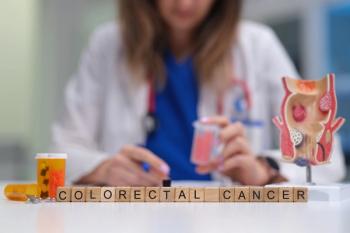
Pharmacist Follow-up Improves Patient Quality of Life After Emetogenic Chemotherapy
Follow-ups from pharmacists show a significant increase in outpatient antiemetic drugs prescribed and quality of life in patients experiencing chemotherapy-induced nausea and vomiting.
Pharmacist-led service models do not significantly affect emergency department and clinic visits for chemotherapy-induced nausea and vomiting. However, this kind of model does lead to an increase in prophylactic prescribing of antiemetic drugs, according to a study published in the Journal of Hematology Oncology Pharmacy.1 Additionally, follow-up calls from a pharmacist to patients who are receiving highly or moderate emetogenic chemotherapy can improve the patient’s quality of life (QOL).
Chemotherapy-induced nausea and vomiting is a severe adverse event and can be caused by poor adherence to guidelines and a lack of appropriately prescribed outpatient antiemetic drugs. At Tampa General Hospital, a pharmacist-led service model was put into effect to contact patients who receive chemotherapy and experience CINV to provide therapy recommendations.
A study was conducted “to evaluate the impact of a pharmacist follow-up on the incidence of emergency department visits, hospital admissions, or infusion center appointments for CINV, with or without dehydration, within 30 days of receiving moderately or highly emetogenic chemotherapy, as well as the impact of CINV on patients’ QOL,” according to the study authors.
Patients who received an anti-emetic drug regimen were compared in a single-center, retrospective study. Patients were divided into 2 groups. One group received telephone follow-ups from pharmacists withing 48 hours of initiating emetogenic chemotherapy between January and July 2020. The other group was comprised of patients who received treatment between January and July 2019, without any follow-up measures.
During the follow-up phone calls, patients were questioned about their adherence to the antiemetic drug regimen, incidences of chemotherapy-induced nausea and vomiting, QOL, and the need for intervention.
The study included 111 patients: 68 in the intervention group and 43 in the control cohort. The percentage of emergency department visits, hospital admissions, and infusion center appointment within 30 of receiving emetogenic chemotherapy without instances of dehydration was 1.5% in the intervention group and 7% in the control group.
The intervention group were prescribed significantly more outpatient antiemetic drugs at 27.9% versus the 1.5% that the control group received. In the entire study population, 40% of antiemetic drug regimens prescribed adhered to the National Comprehensive Cancer Network guidelines recommendations.
The study had several limitations, including the retrospective nature of the study and challenges in evaluating certain end points.
“The results of this study clearly show a positive impact of pharmacist-led follow-up calls and demonstrate the value of a pharmacist’s active role to the multidisciplinary team for patients who are initiating moderately or highly emetogenic chemotherapy,”the authors concluded.
Reference
1. McCabe J, Al-Bahou A, Koontz L, Linderback L, Verbosky M, Prieto M. Impact of pharmacist telephone follow-up on chemotherapy-induced nausea and vomiting. J Hematol Oncol Pharm. 2022;12(5):248-254.
Newsletter
Pharmacy practice is always changing. Stay ahead of the curve with the Drug Topics newsletter and get the latest drug information, industry trends, and patient care tips.











































































































































































































